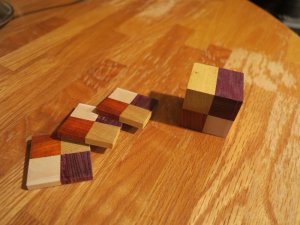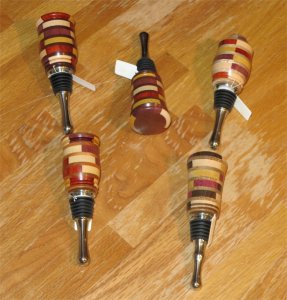Timbo
Member
I've been making foot long segmented spindles which are about 2" square. I cut these into 1/8" slices which I glue together to make wine stopper blanks. After spending time carefully making the spindles, I want to use the thinnest blade possible when cutting the slices in order to minimize waste.
Using a band saw is not an option because it does not leave a smooth enough surface. I'm currently using a 7-1/4 Freud Diablo D0740R thin kerf blade, which leaves a very smooth glue ready surface, but the diameter is not great enough to give me the height to cut completely through a 2" spindle. I could get a 10" thin kerf blade, but I was wondering if there was a good option that would give a thinner kerf than the 10" blade, but would also give me a little more height than the 7-1/4" I'm currently using. I was thinking the Freud LU83R008 8-Inch 40 Tooth ATB Thin Kerf Combination Saw Blade might be a good option. Has anyone used this blade or something similar and can offer a recommendation. Thanks.
Using a band saw is not an option because it does not leave a smooth enough surface. I'm currently using a 7-1/4 Freud Diablo D0740R thin kerf blade, which leaves a very smooth glue ready surface, but the diameter is not great enough to give me the height to cut completely through a 2" spindle. I could get a 10" thin kerf blade, but I was wondering if there was a good option that would give a thinner kerf than the 10" blade, but would also give me a little more height than the 7-1/4" I'm currently using. I was thinking the Freud LU83R008 8-Inch 40 Tooth ATB Thin Kerf Combination Saw Blade might be a good option. Has anyone used this blade or something similar and can offer a recommendation. Thanks.



